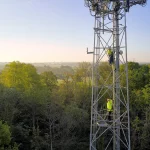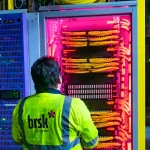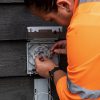Virgin Media O2 UK and NEC Extend OpenRAN Mobile to Field Trial

Broadband and mobile giant O2 (VMO2) has today announced that their early tests of Open Radio Access Network (OpenRAN or O-RAN) technology – supported by NEC and Rakuten Symphony – are now being extended to the field phase, which will see the activation of the first live sites in VMO2’s commercial mobile network.
The O-RAN approach seeks to standardise the design and functionality of radio access hardware and software, thus increasing the number of companies able to supply operators via vendor-neutral hardware and software-defined technology (the RAN side covers infrastructure, masts and antennae). This may also help to cut costs and removes the necessity to depend upon the largest suppliers of such kit (e.g. Nokia and Ericsson).
All the major UK mobile network operators are currently looking at O-RAN solutions for the future and have even agreed to a “joint ambition” with the government, which will see 35% of the UK’s mobile network traffic being carried over O-RAN by 2030 (here). But Vodafone is the only operator to have started a solid large-scale commercial build (here and here).
Advertisement
Mobile operator O2 (VMO2) has also been working on similar solutions with NEC for a while (here), which seems to now be bearing some fruit with the activation of their first live OpenRAN macro-sites on VMO2’s commercial network.
Jeanie York, Chief Technology Officer at VMO2, said:
“The successful activation of Virgin Media O2’s first UK macro-sites demonstrates the potential of the multi-vendor Open RAN model. We are strong believers in the power of diverse Open RAN ecosystems and in NEC, we have a partner that really shares our view. Its industry-leading system integration capabilities are integral in helping us deliver the mobile networks of the future, today.”
Sadly, we don’t get a lot of detail about their first field deployment, except that it seems to be taking place in the Northamptonshire (England) region.
Mark is a professional technology writer, IT consultant and computer engineer from Dorset (England), he also founded ISPreview in 1999 and enjoys analysing the latest telecoms and broadband developments. Find me on X (Twitter), Mastodon, Facebook, BlueSky, Threads.net and Linkedin.






















































O2 definately need to do something. Just switched to them as part of a volt deal and found the coverage is poor and where you do have coverage there isn’t enough bandwidth to provide a decent level of bandwidth.
I used to manage capacity on the UKs first broadband service and know from experience that once you hit the point where data packets are dropped it quickly escalates to almost no service due to repeat attempts (a bit like pressing reload on a web page where one bit is missing).